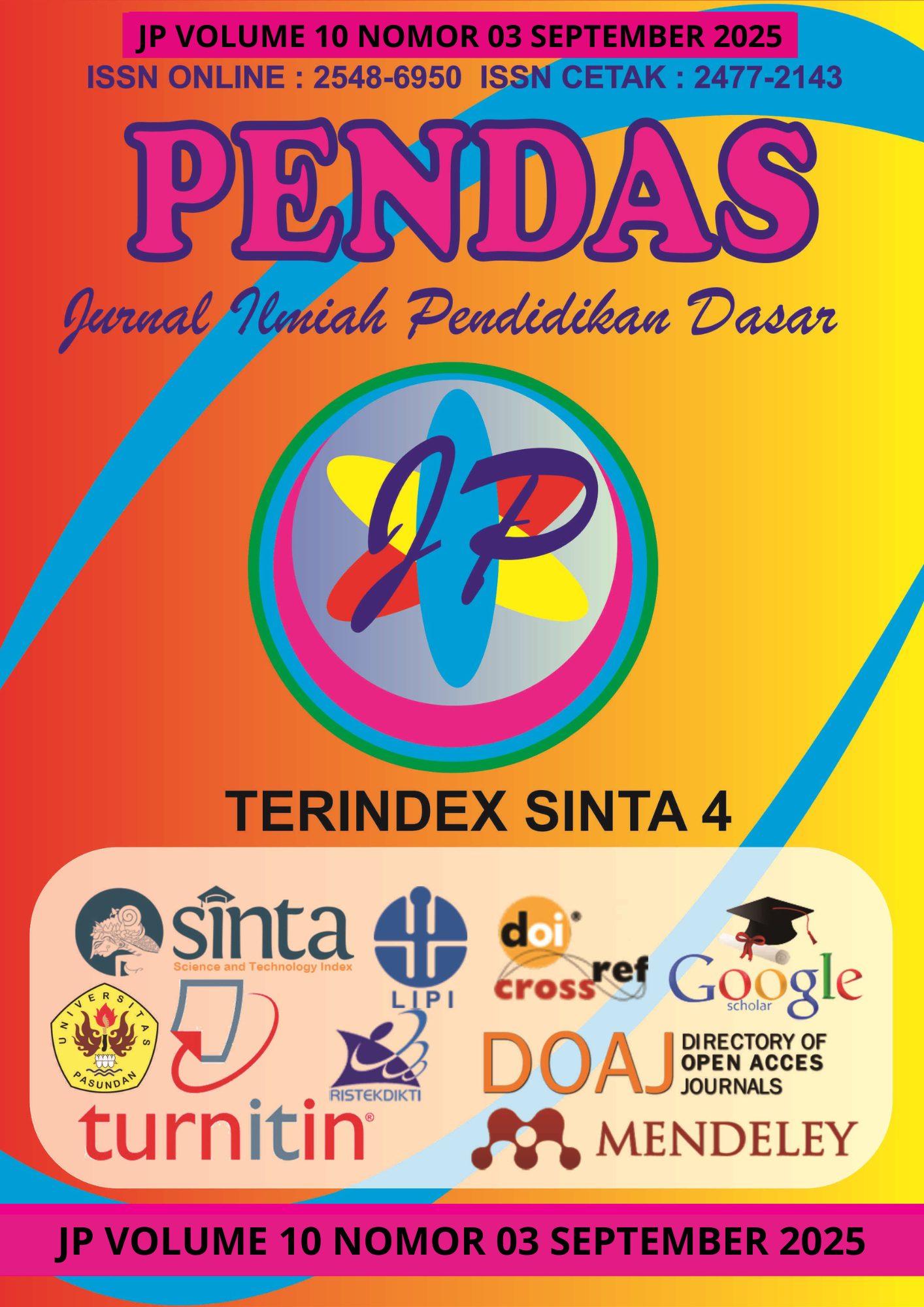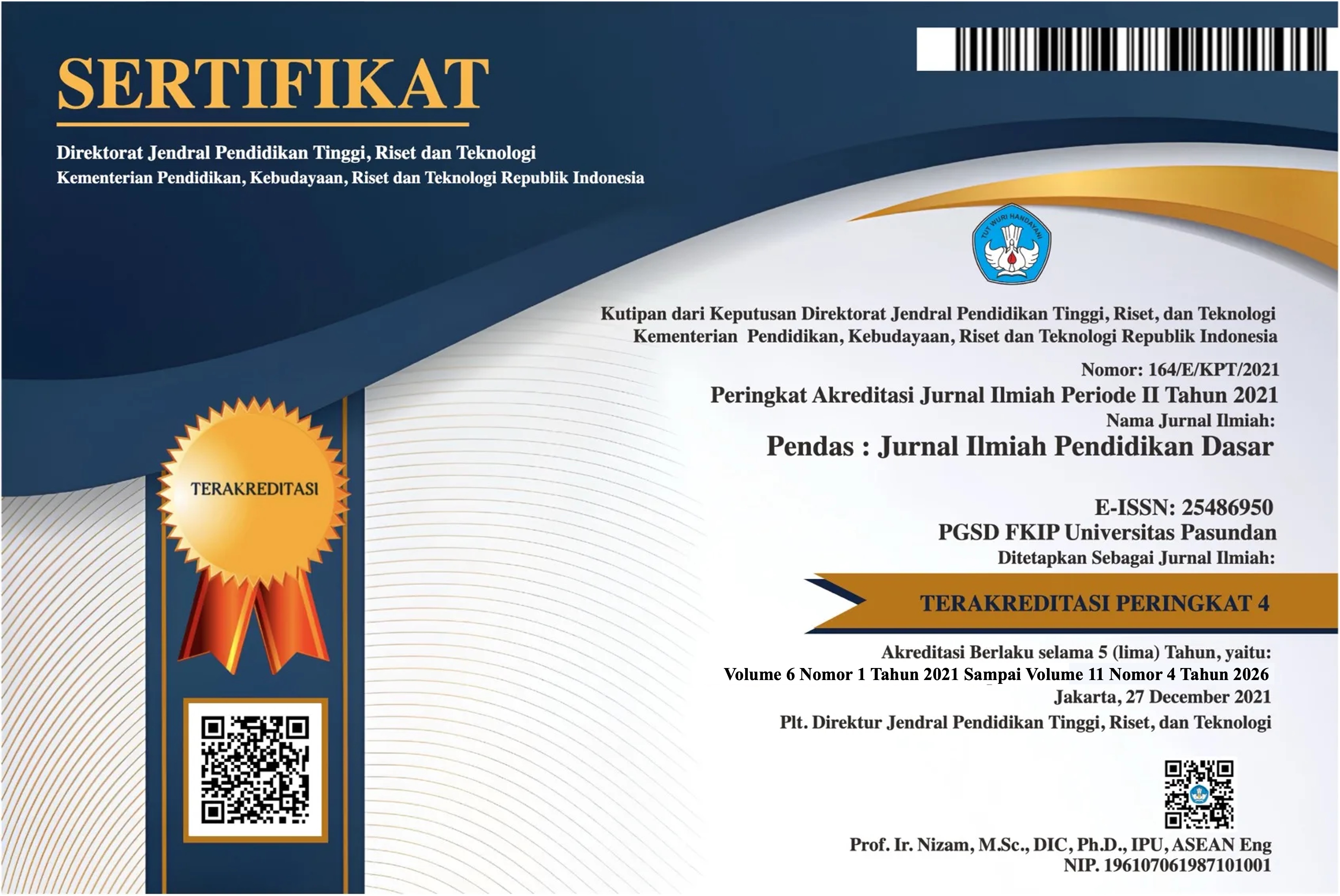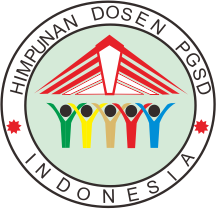PENGARUH IMPLEMENTASI E-LKPD BERBASIS CONTEXTUAL TEACHING AND LEARNING (CTL) TERHADAP KEMAMPUAN MATEMATIS SISWA
DOI:
https://doi.org/10.23969/jp.v10i3.32991Keywords:
arithmetic sequences and series, contextual learning, E-LKPD, mathematical problem solvingAbstract
This study aims to determine the effect of the Contextual Teaching and Learning (CTL) learning model assisted by E-LKPD on the mathematical problem-solving ability of class X students on the material of arithmetic sequences and series at SMK Arrahmah Papar. The background of this study is based on the low interest and ability of students in solving mathematics problems, especially non-routine problems that require conceptual understanding and high-level thinking skills. The study used a quantitative approach with a pretest-posttest control group design. The research sample consisted of two randomly selected classes, namely the experimental class using the CTL model assisted by E-LKPD and the control class using the conventional learning model. The instruments used were in the form of a mathematical problem-solving ability test and media and material validation sheets. The results of data analysis showed that the average posttest score of students in the experimental class increased significantly compared to the control class. In the experimental class, the average score increased from 48.17 to 81.83, while in the control class it increased from 48.50 to 76.83. The Mann-Whitney statistical test and paired sample t-test showed a significance value of <0.05, which means there is a significant difference between the two classes. This finding indicates that the use of the CTL learning model assisted by E-LKPD is effective in improving students' mathematical problem-solving abilities. This study recommends that teachers apply the CTL model and utilize interactive E-LKPD media as an innovative learning strategy to improve student engagement and understanding in mathematics lessons.
Downloads
References
Afriansyah, A., Amelia, A., Sutirna, S., & Hanifah, H. (2022). Kemampuan pemecahan masalah matematis melalui model contextual teaching and learning. Jurnal Edukasi Matematika, 5(1), 33–42.
Anik, A., Achmad, A., & Dina, D. (2019). Matematika untuk SMK/MAK Kelas X. Jakarta: Pusat Kurikulum dan Perbukuan.
Cahyani, C., Naila, N., Salsabila, R., & Pinka, P. (2024). Indikator kemampuan pemecahan masalah berdasarkan NCTM. Jurnal Pendidikan Matematika, 3(1), 14–22.
National Council of Teachers of Mathematics. (2000). Principles and standards for school mathematics. Reston, VA: NCTM.
Nisrina, D., Amelia, A., Sutirna, S., & Hanifah, H. (2022). Analisis kesulitan pemecahan masalah matematis. Jurnal Pendidikan Matematika dan Sains, 6(3), 88–95.
Neni, N., & Eko, E. (2021). Meningkatkan hasil belajar matematika siswa melalui model pembelajaran CTL. Jurnal Pendidikan Matematika, 7(2), 125–134.
Putri, R., & Heni, H. (Eds.). (2020). Pembelajaran berbasis kontekstual: Teori dan praktik. Bandung: Remaja Rosdakarya.
(Penulis yang dirujuk: Rusman & Tati dalam buku ini)
Ramadoni, R., Mista, M., & Anisah, A. (2023). Efektivitas model CTL terhadap hasil belajar matematika di era digital. Jurnal Inovasi Pendidikan Matematika, 6(2), 55–63.
Rahayu, S., & Budiyono, B. (2020). Pengembangan E-LKPD berbasis Liveworksheet untuk meningkatkan keterampilan belajar siswa. Jurnal Teknologi Pendidikan, 4(2), 112–120.
Zulianti, Z., & Astuti, A. (2020). Pengaruh model CTL terhadap kemampuan berpikir kritis matematis. Jurnal Pendidikan dan Pembelajaran Matematika, 8(1), 20–27.
Sumarmo, U. (2015). Berpikir dan disposisi matematik: Apa, mengapa, dan bagaimana dikembangkan pada siswa sekolah? Makalah Seminar Nasional Pendidikan Matematika, Universitas Pendidikan Indonesia.
Downloads
Published
Issue
Section
License
Copyright (c) 2025 Pendas : Jurnal Ilmiah Pendidikan Dasar

This work is licensed under a Creative Commons Attribution 4.0 International License.



















